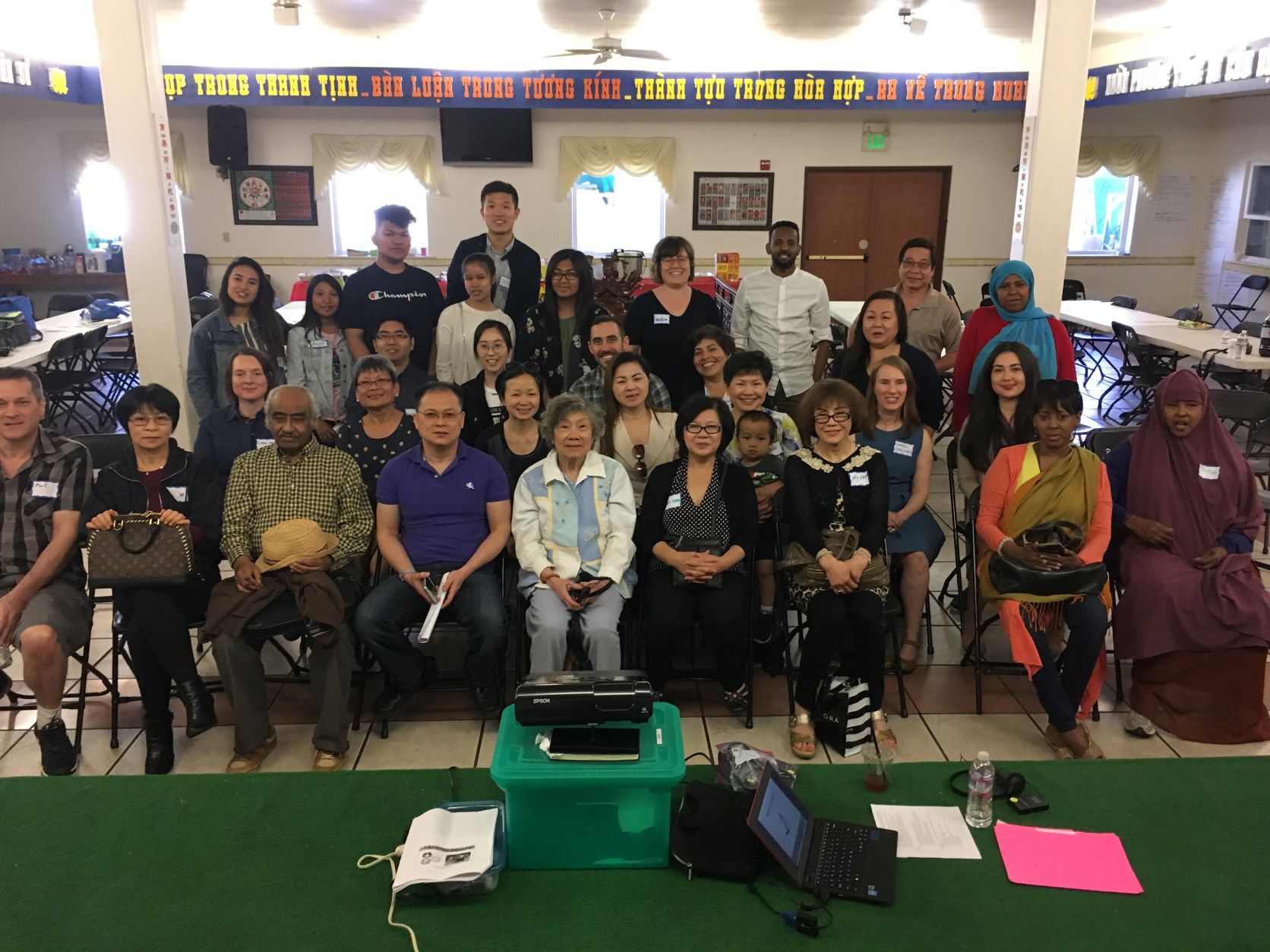Abdi Yussuf, Sage’s Equitable Development Organizer, talks about his experience organizing and working with the Graham Street neighborhood throughout the years.
For the past four years, Puget Sound Sage has organized with the Graham Street community – a primarily BIPOC neighborhood in the Rainier Valley – to get ahead of the displacement and gentrification that will inevitably come with the construction of a new light rail station. This year, alongside seven community-based organizations that make up the Graham Street Community Action Team (CAT), we are creating the roadmap to make the Graham Street Neighborhood Vision a reality, as well as preparing the transition of the Action Team from Puget Sound Sage’s leadership into its own self-sustaining coalition.
Abdi: “I think that the CAT is the best argument for the capacity building that Sage does. We organized, built really close-knit relationships with the organizations, and together we identified what the neighborhood needs and what it’s going to take to get to that level. Now, they’re in a place where they feel confident enough, organized enough, and have enough capacity to lead that work, with Sage stepping back into a support role.”
In 2031, Sound Transit will open a light rail station on MLK Jr. Way South between the Othello and Columbia City stops, which will be the new Graham Street Station. Along with the new station will come a hub of new businesses, homes, and infrastructure, but investments in public infrastructure without adequate planning often lead to gentrification and displacement. Communities who have been rooted in the neighborhood for decades get priced out of their homes, forcing them to move farther from jobs and accessible transit.
In order to form a different outcome, Puget Sound Sage organized the Graham Street neighborhood in 2018 – local leaders, business owners, and institutions that are deeply committed to preserving and growing the Graham Street community – to create a shared community vision for their future. The months-long visioning process comprised of listening sessions, surveys, and planning sessions, which reached over 2,000 people. What resulted was a vision of multi-cultural and multi-generational spaces where neighbors are thriving, supported and stable.
How did you initially approach organizing in the neighborhood?
“I realized that in order for us to have a truly community-centered approach, we need to give special attention to faith centers.
Faith centers like Al Noor Islamic Center, Co Lam Pagoda, and Cham Refugees Community are not only faith centers, they are also cultural centers, community centers, and counselling centers. These are the places the community comes to in order to get answers to all the problems that they’re dealing with. The mosque is not just a place where you go to pray. It’s where you consult with the Imams. They know the ins and outs of the community, know the problems that the community is facing. If a community member is facing homelessness or is getting pushed out, this is where they go. Faith institutions are the cultural anchors of the neighborhood.”
What was the general sentiment when you were first talking with the community?
“Fear, confusion and hopelessness. They recognized that they were going to be overpowered by the development that was coming. They feared that they were going to lose their base and also get displaced themselves once rent starts going up or developers start buying up properties, because the folks who attend these faith centers also support them.
So that’s where we come in and say, “If 5, 6, or 7 community organizations work together, you can have power. You can build the power to make sure your communities get to stay in this neighborhood.”
The Graham Street Community Action Team (CAT) was also formalized during the visioning process. They comprise of seven community-based organizations that now serve as the steering committee to build the long-term capacity and infrastructure that will make the Graham Street Neighborhood Vision a reality. Over the past three years, Puget Sound Sage has facilitated monthly meetings with the CAT to learn together about anti-displacement strategies as well as advocate for the stability of their neighborhood. Their most significant win was in 2021 where the CAT lobbied for Sound Transit to stop the proposed postponement of the light rail station’s construction.
Abdi: “Sound Transit has postponed the Graham Street Station twice before, and they were able to do so because the neighborhood wasn’t organized. This time the CAT was organized and played a leading role in fighting for the station to be built as scheduled.
I noticed that what started with feelings of fear and powerlessness years before was replaced by a renewed sense of energy in the neighborhood. Folks are saying, “Nobody is going to come and displace us because now we have power.” People have different faiths, speak different languages and come from different cultures, but they know that by working together they can help their communities stay rooted in place.”
This year marks the next chapter of our work with Graham Street. As we move to co-create an implementation plan of the neighborhood vision, we’re preparing to transition the coalition to be fully led and sustained by the Community Action Team members themselves.
What do you love most about being an organizer?
 “I love the relationships that we’ve built. I love seeing the progress of power building over the years, seeing the commitment from the leaders and community to stay rooted in these neighborhoods. It’s really a privilege to be part of making sure these neighborhoods get to stay as diverse as they are. We all learn together about building power and help build their capacity, and it’s so fulfilling to see these community organizations use those learnings to advocate for and be the champions of their neighborhood. It just fills me with pride and joy.
“I love the relationships that we’ve built. I love seeing the progress of power building over the years, seeing the commitment from the leaders and community to stay rooted in these neighborhoods. It’s really a privilege to be part of making sure these neighborhoods get to stay as diverse as they are. We all learn together about building power and help build their capacity, and it’s so fulfilling to see these community organizations use those learnings to advocate for and be the champions of their neighborhood. It just fills me with pride and joy.



